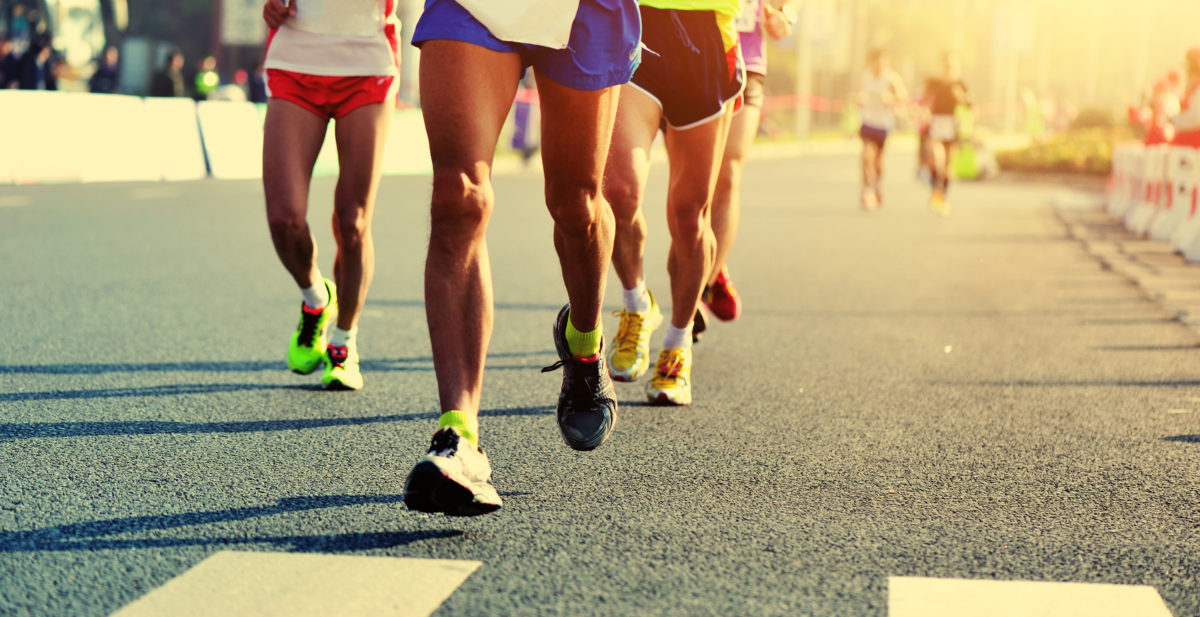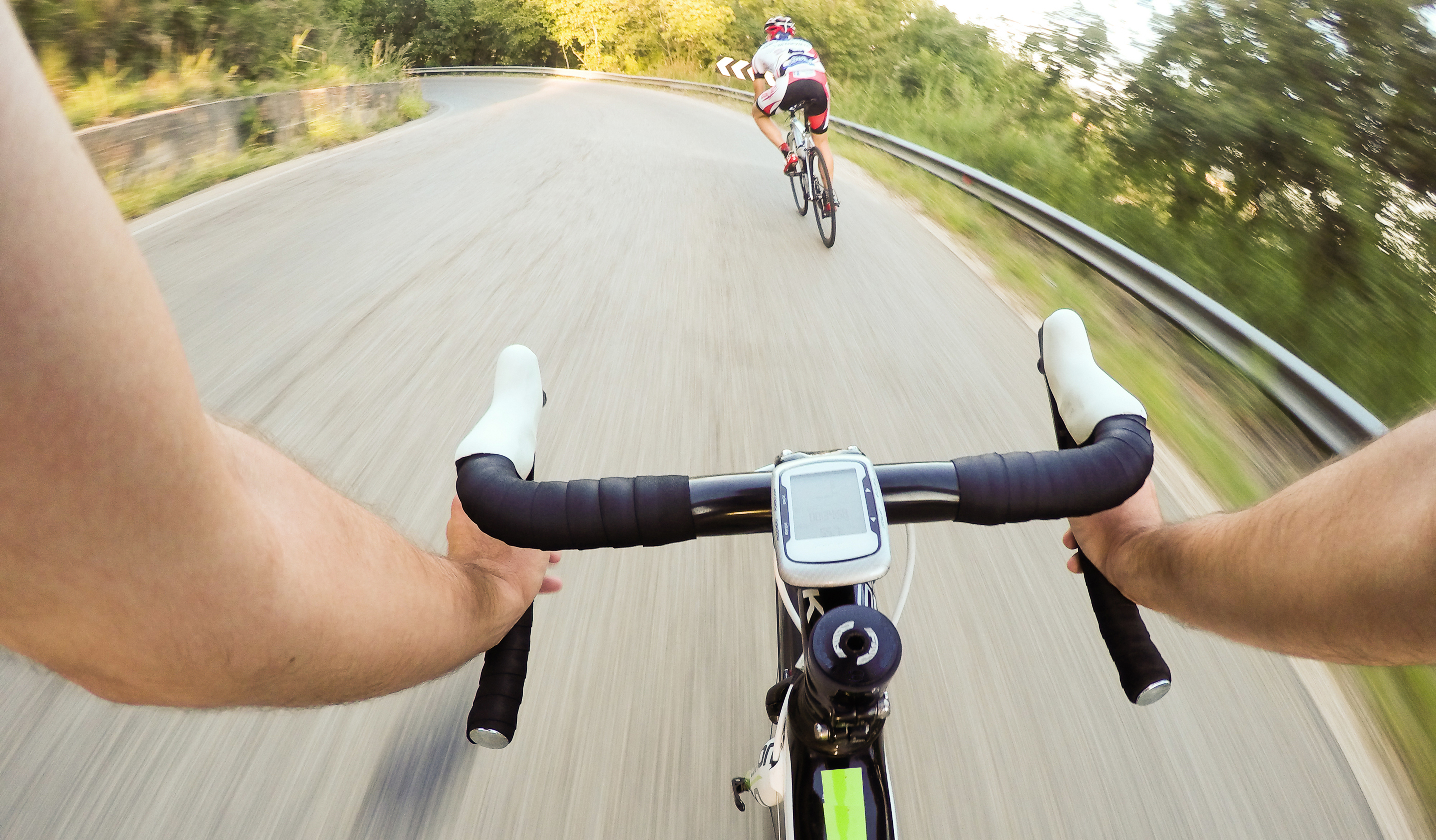
Increasingly, athletes no longer have just one sport they like to do. Many runners or cyclists find themselves drawn at some point to triathlon. They want to swim a distance, then cycle, and finally run—all in one event. That’s quite a challenge, even for experienced athletes, as each individual sport places completely different demands on the body. But how do you train correctly for a triathlon?
The individual disciplines in a triathlon
Runners and even cyclists will usually toy with the idea of taking part in a triathlon. They’re already familiar with one of the three disciplines and they’ve done training for it. But how do they go about training for the other disciplines? There are certain things that are essential to bear in mind in each discipline—both when you’re training and during the triathlon itself.
Swimming
The first discipline in a triathlon is also the one most people find the hardest as they usually don’t have much experience in the water. Above all, experts advise working on your own technique. Only then should you start working on power and endurance. Beginners often make the mistake of mainly using their arms when they swim and wanting to spare their legs. But that’s the wrong approach. A good leg technique helps propel you forward and improves your position in the water, which makes swimming easier. That’s why your triathlon training should always include some really demanding leg work in the pool. It’s best to do this on training days when you’ll otherwise hardly be using your legs. It’s also a good idea to use a range of different strokes to work on your strength and coordination.
Cycling
Cycling is the discipline in which you have to cover the longest distance in a triathlon. That’s why it’s also the discipline that people generally do the most training for. The benefit of doing a lot of training on a bike is that it also helps develop your basic endurance, which will also help improve your running and swimming. If you don’t have a racing bike it’s not the end of the world, as you don’t necessarily need one when you’re starting out. The important thing is whether or not you can cover a long distance on your bike. Your triathlon training should include cycling long distances in any case, to improve your basic endurance. Yet you should also include interval training in your triathlon training plan. These can help improve your strength endurance. It’s best to do intervals where you select a gear with high resistance and then cycle uphill. You can also do intervals where you cycle into a headwind. And it’s a good idea to vary your cadence from time to time, too. You can do that by pedaling with just one leg for a while or by incorporating short sprints into your rides.

Running
Since running is the last discipline in a triathlon, most people also find it the most difficult. Their energy is already starting to fade, and they still have several kilometers left—a full ten kilometers in an Olympic-length event, for example. What’s more, even experienced runners find their legs feel very odd for the first few meters. That’s because running is the only discipline in a triathlon where the legs have to carry the full body weight. Your breathing, muscles, and circulatory system have to get used to it again after swimming and cycling. You should therefore start slowly over the first kilometer or two. Only then can you increase the tempo. In order to train for the switch from cycling to running, it can be worth incorporating this changeover in your triathlon training plan occasionally. That way you’ll know what to expect and you’ll be able to see how your body responds. It will be enough to do a short running session after cycling. When you train for the running stint of a triathlon, you should run at least ten kilometers every week.
Triathlon training—an eight-week training plan
Once you have decided to take part in a triathlon, you should set aside at least eight weeks to train for it. Your training for these eight weeks could look like this:
| Monday | Tuesday | Wednesday | Thursday | Friday | Saturday | Sunday | |
| Week 1 | Swimming (training: technique and position in water) +
gym |
Gentle run | Swimming +
running with change of tempo |
Cycling +
running afterward |
Cycling | ||
| Week 2 | Gym + gentle run with intervals at higher pace | Cycling (occasionally at race speed) | Swimming | Cycling | Running with occasional squats and lunges | ||
| Week 3 | Swimming (training: legs and coordination) +
gym |
Gentle run with intervals at higher pace at the end | Cycling (incorporate sprints) | Swimming
(open water) |
|||
| Week 4 | Gentle run | Cycling (increase cadence occasionally) | Gym +
gentle run with intervals at higher pace |
Swimming +
gym |
Cycling +
Running afterwards |
Gentle run | |
| Week 5 | Cycling (incorporate different cadences) | Cycling + gentle run afterwards | Running with high-knee running + swimming in open water | Cycling | Cycling + swimming (but only optional) | ||
| Week 6 | Swimming (training: technique and coordination) | Gym | Cycling | Running | |||
| Week 7 | Brick workout with running and cycling | Swimming | Running + gym | Brick workout with cycling and running | Swimming | Cycling and gentle run | |
| Week 8 | Cycling at a gentle pace | Swimming in open water and at race speed | Running + cycling | Triathlon |
Of course, this is just one possible triathlon training plan. There are lots of other variations that would be suitable. And how long precisely you swim, run, or cycle for on each of the individual training days will depend on your performance level and on the target you want to achieve. This plan is therefore basically just a rough guide showing when you should train and over what period of time.
With all these triathlon training tips for the individual disciplines, it is vital that you don’t forget your upper body—as you will see from the ‘gym’ training blocks in the training plan. Push-ups, abdominal and back muscle workouts, and exercises on the lateral supporting muscles must form part of your triathlon training plan. The upper body is hugely important when swimming anyway, a well-trained upper body can help you maintain an aerodynamic position much longer when you’re cycling, making you faster, and an upright posture is essential for a good running style, too.
So now you can get started with training for your first triathlon!